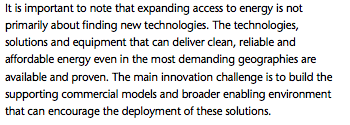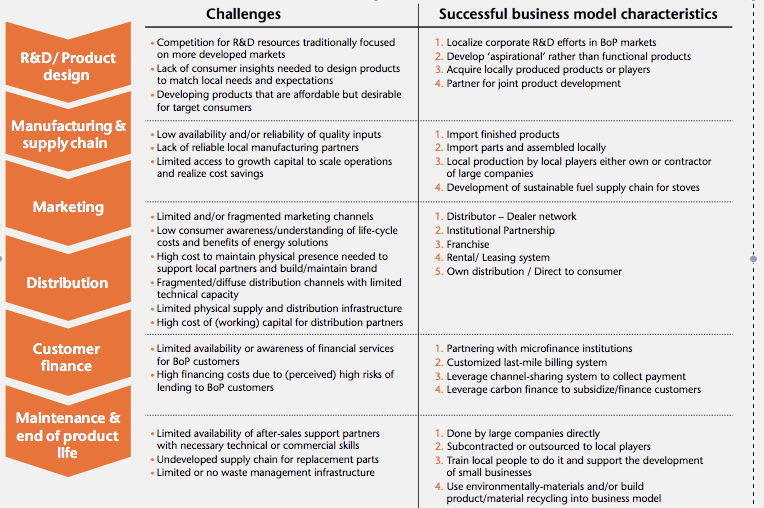Editor's Choice, Febuary 2012: Business solutions to enable energy access for all
One of the most important paragraphs in this month’s Editor’s Choice is this:

This theme is stated often – it’s not the new technology we need, but the business systems that works at the base of the pyramid. But – and there are two large 'buts' - stating it is not enough. Firstly, demonstrating it in practice is important. That’s where this report on Business solutions to enable energy access for all helps.
Secondly, however familiar this is as a mantra in the worlds that discuss inclusive business, my experience reading applications to Innovations Against Poverty and Business Innovation Facility, is that many inspired innovators and entrepreneurs still lack inspiration on this point. Are effort and expertise well balanced between the new technology, and the challenges of markets , distribution and revenue models? Sometimes yes, but sometimes no.
What I would really like to highlight as an Editor’s Choice is a set of cases showing why a suite of good energy technologies failed in their business model and business system. That would be a must-read for the energy innovators of today. In the absence of that, Chapter 4 of Business Solutions to Enable Energy Access for All, provides energy entrpreneurs with plenty of food for thought.
This 40 page report, produced by the WBCSD Energy Access Initiative in time for the 2012 World Economic Forum in Davos, explains the size of the energy problem for households in the developing world, and presents a range of business solutions. The seven pages of Chapter 4 explore business models for three kinds of energy solutions: extension of the electricity grid; distributed/renewable systems; and products and appliances. For each, we get challenges, solutions and real-life examples.
If you have time to read just one page, or one box, go to Page 18 for this useful checklist, which summarises the challenges and tips for successful energy products and appliances at the Base of the Pyramid.

Figures 5: Business Model Innovations for BoP energy markets: Addressing challenges in the value chain for products and appliances. Extracted from pp 18.
Once you are there, you will find it hard to resist browing the real-life examples, such as Osram in Kenya and Siemens in Vietnam. I'm sure this report got a good airing at Davos. I hope key parts will find their way to the screens or hands or entrepreneurs, to help them know more about what others are doing, and the business model adaptations that are working.
Further information
Editor’s Choice in September 2011 also explores energy solutions for the base of the pyramid:
Investing in Clean Energy for the BoP; what you need to know.
A list of the full Editor's Choice archive since December 2010 can be viewed here.
Inclusive business ventures that are developing energy solutions, with support of the Business Innovation Facility or Innovations Against Poverty include:
Mulanje Electricity Generation Authority (micro-hydro in Malawi)
Oando Marketing (lpg cooking cylinders in Nigeria)
Nuru Energy (manufacture and distribution of off-grid energy in India)
HiNation (solar lighting and mobile charging in Zambia)
GreenLaiti (renewable energy in Zambia)
Vagga till Vagga (biomass stoves in Zambia)
Greenway (waste to electricity in India and Burkina Faso)
